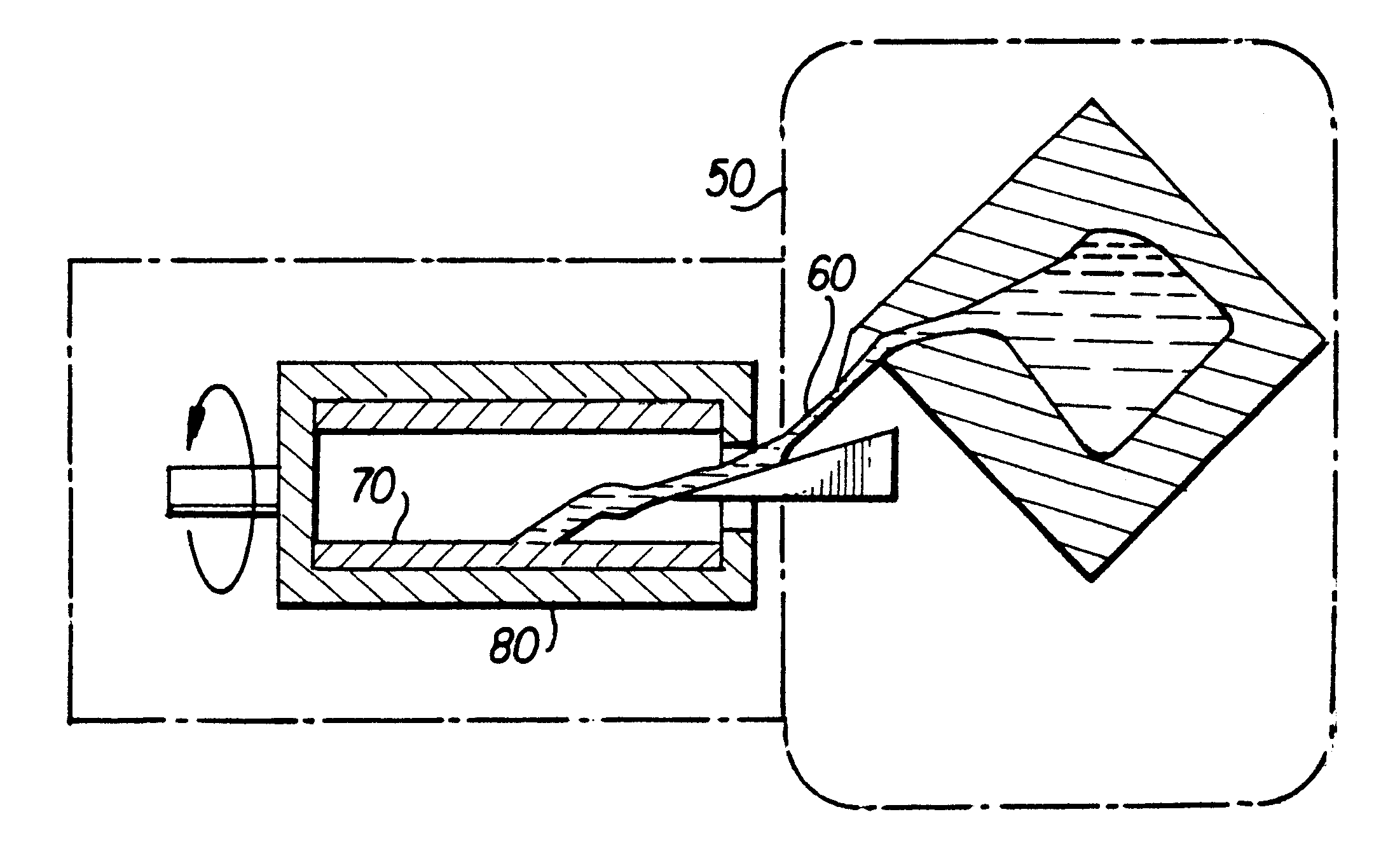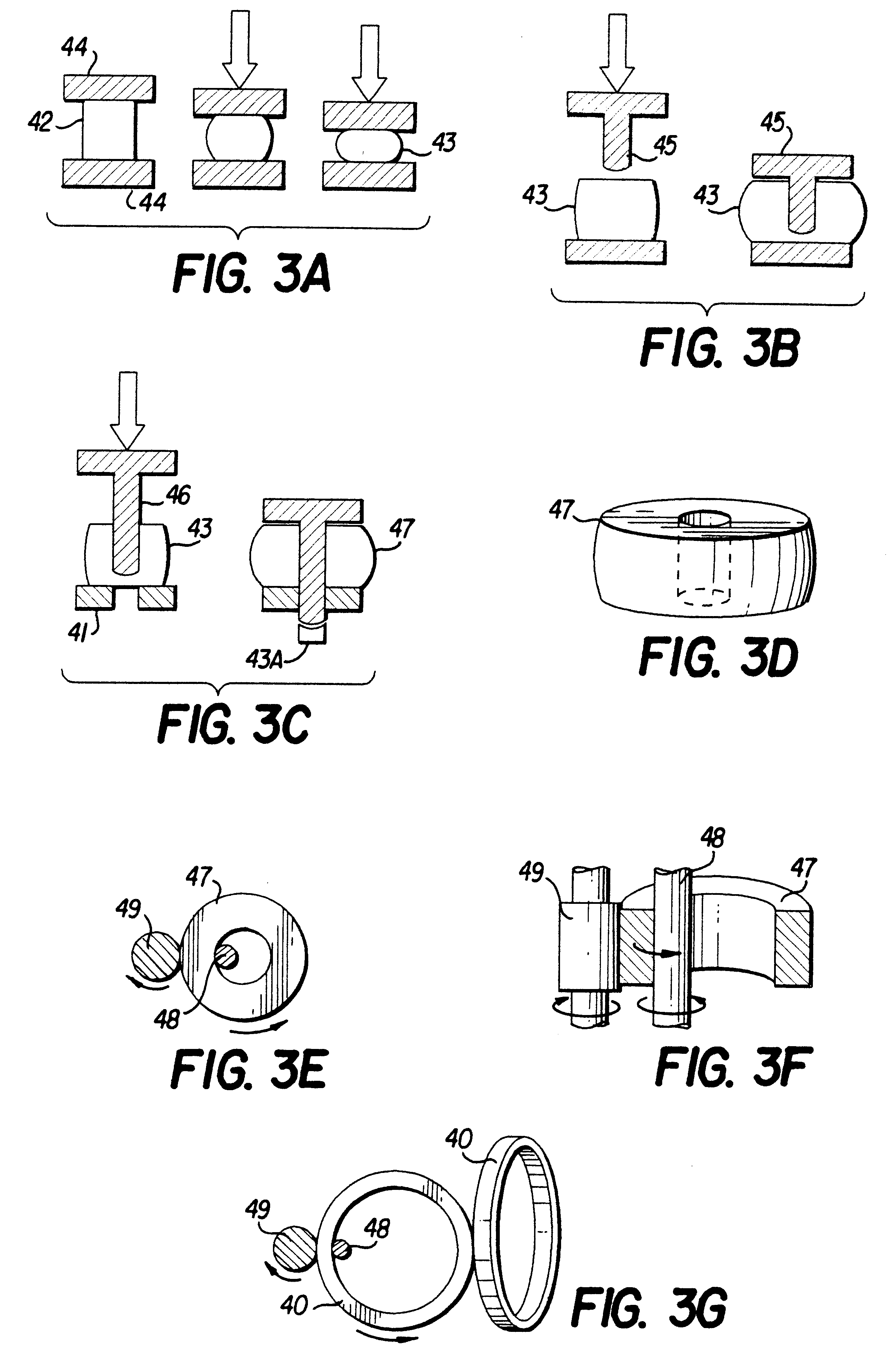Centrifugal casting of nickel base superalloys in isotropic graphite molds under vacuum
a technology of isotropic graphite and nickel base superalloys, which is applied in the field of centrifugal casting of nickel base superalloys, can solve the problems of difficult hot work of alloys, low yield, and high production cost, and achieve high purity, high density, and enhance the effect of non-reactivity of the mold surfa
- Summary
- Abstract
- Description
- Claims
- Application Information
AI Technical Summary
Benefits of technology
Problems solved by technology
Method used
Image
Examples
Embodiment Construction
Various nickel, cobalt and iron base superalloys that are suitable candidates to be fabricated by the centrifugal casting technique as components with high integrity and quality under vacuum in isostatic graphite molds are given in TABLE 3.
Typical shapes of superalloy castings that can be fabricated by the method described in the present invention are as follows:
(1) Rings and hollow tubes and the like with typical dimensions as follows: 4 to 80 inch diameter.times.0.25 to 4 inch wall thickness.times.1 to 120 inches long.
(2) The molds can be machined to produce contoured profiles on the outside diameter of the centrifugally cast superalloy tubular products and rings.
(3) The molds can be machined with a taper so that the castings with desired taper can be directly cast according to specific designs.
It should be apparent that in addition to the above-described embodiments, other embodiments other embodiments are also encompassed by the spirit and scope of the present invention. Thus, t...
PUM
| Property | Measurement | Unit |
|---|---|---|
| porosity | aaaaa | aaaaa |
| compressive strength | aaaaa | aaaaa |
| compressive strength | aaaaa | aaaaa |
Abstract
Description
Claims
Application Information
 Login to View More
Login to View More - R&D
- Intellectual Property
- Life Sciences
- Materials
- Tech Scout
- Unparalleled Data Quality
- Higher Quality Content
- 60% Fewer Hallucinations
Browse by: Latest US Patents, China's latest patents, Technical Efficacy Thesaurus, Application Domain, Technology Topic, Popular Technical Reports.
© 2025 PatSnap. All rights reserved.Legal|Privacy policy|Modern Slavery Act Transparency Statement|Sitemap|About US| Contact US: help@patsnap.com



